FRANCE
Nice

Nice
Nice
Nice, the capital of the Côte d'Azur, is a truly cosmopolitan tourist destination. This part of the French Riviera is the perfect holiday resort for those who love the sun. There are many sophisticated terraces and good dining options. But Nice is not only sun, sea and sand, culture lovers will also be well catered for with many top museums (often free), an arts-nouveaux district and ancient Roman excavations.
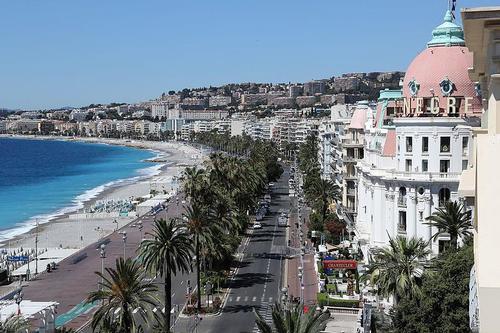
Nice Promenade des AnglaisPhoto: Courrier International CC 4.0 International no changes made
The Promenade des Anglais is the almost 300-year-old legendary boulevard that stretches for about 6 kilometers, with many blue chairs where you can sit, relax and enjoy a beautiful sea view. Many visitors enjoy walking along this central lifeline of Nice.
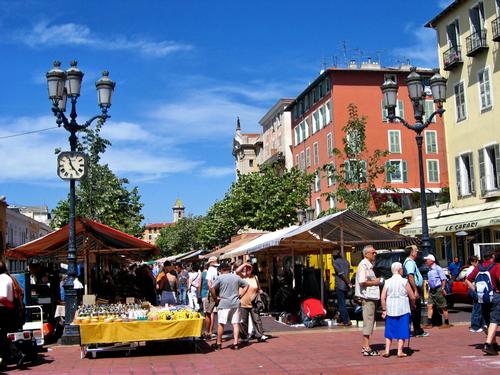 Nice Cours SaleyaPhoto: Mg02 CC 2.0 Generic no changes made
Nice Cours SaleyaPhoto: Mg02 CC 2.0 Generic no changes made
Vieux Nice is the oldest part of the city. A market is held daily on the central square, the Cours Saleya, and on Mondays a very fascinating antique and fragile market. There are many terraces and picturesque streets, a large part of the old center is car-free.
Location
Nice is located in the extreme southeast of France on the Côte d'Azur. Nice is located on the Mediterranean, close to the border with Northern Italy and within driving distance of Genoa. The Maritime Alps lie to the north of the city. Nice has a population of approximately 350,000 people. The metropolitan area has more than a million inhabitants.
Weather
Nice has a Mediterranean climate with hot dry summers, mild winters and more than 300 days of sunshine a year. It is therefore not surprising that Nice is a holiday destination that attracts tourists all year round. Although the occasional 'mistral' wind can cause unpleasant dust storms, Nice is sheltered by the hills north of the city. Nice does not get much rain, but when it rains there are often short, bright showers and soon after that the weather clears.
Spring is a particularly pleasant time of the year to visit Nice. With an average temperature of 15 °C and plenty of sunny weather, it is relatively quiet. Visitors shouldn't come especially for 'beach weather' because the water temperature is relatively low at that time of the year. The summer months in Nice are predictably warm and sunny, with an average temperature of 22 °C. The time of year with the most rainfall is in the autumn. Nevertheless, the weather in October and November can still be very pleasant with an average temperature of 17 °C. In winter, the climate in Nice is usually dry and sunny. Temperatures are somewhat lower than in summer, but still mild for the time of year, with an average of 9 °C.
History
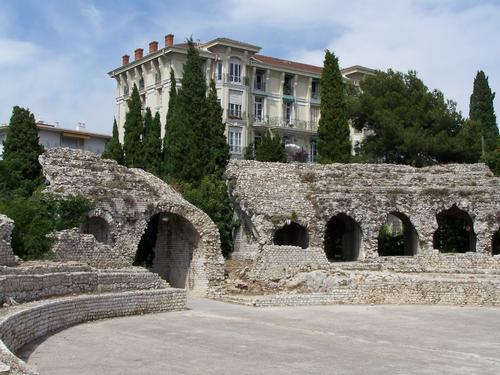 Roman Remains NicePhoto: Eric Coffinet in the public domain
Roman Remains NicePhoto: Eric Coffinet in the public domain
The history of Nice goes back to the earliest times, how far back is a matter of some debate. Some believe that, based on archaeological evidence, it is many thousands of years before Christ. Others believe that Nice was founded by the Greeks of Marseilles in 350 BC. Nice was known as Nikaia, and it quickly grew into a busy trading place. We do know for sure that the Romans conquered the city. They settled in a neighborhood of Nice known today as Cimiez. When the Roman Empire fell, Nice became part of Genoa. From the 8th to the 10th century AD, the Saracens were in power. William of Provence defeated the Saracens for good in the year 974.
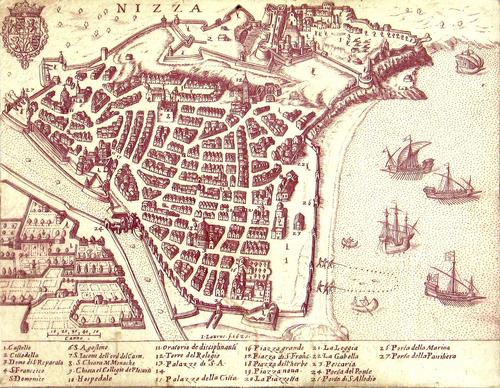 Nice map from 1624Photo: Public Domain
Nice map from 1624Photo: Public Domain
During the Middle Ages, Nice's history was closely linked to that of Italy. Nice was an ally of the city-state of Pisa and the enemy of Genoa. The city also had to constantly protect itself against advances by the king of France. During the 13th and 14th centuries, Nice fell under the Counts of Provence. In 1388 it came under the control of Savoy. During this period, the city was fortified against attacks by Barbary pirates. In 1626 Nice was boosted by obtaining complete free trade. After this Nice came briefly under the control of the Duke of Guise. The city changed hands several times in the years that followed and in 1792 Nice was conquered by France.
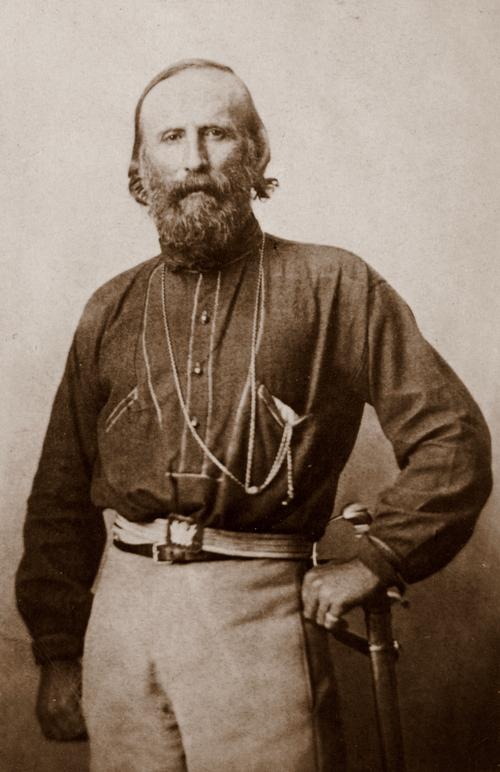 Nice Giuseppi GaribaldiPhoto: Public Domain
Nice Giuseppi GaribaldiPhoto: Public Domain
In 1814 Nice became part of the Kingdom of Piedmont-Sardinia. In 1860, King Immanuel III offered the city to Emperor Napoleon III to raise money. In return, Italy could benefit from French financial and military support in the Italian War of Independence against Austria. The people of Nice were asked to vote on the deal. Giuseppe Garibaldi tried to convince the residents to reject it, but to no avail. In the years that followed, there were protests from those who agreed with Garibaldi, namely that the city should be united with Italy.
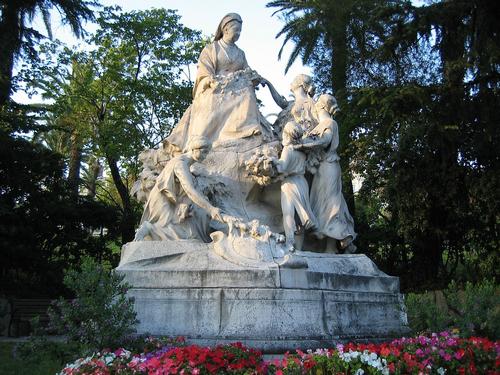 Statue Queen Victoria in NicePhoto: Mwanasimba CC 2.0 Generic no changes made
Statue Queen Victoria in NicePhoto: Mwanasimba CC 2.0 Generic no changes made
Nice has long had a relationship with English visitors. After the arrival of the railway into the city, more English tourists arrived. In 1900 the Nice tram was electrified, this modern transport made it easier for visitors to travel to nearby Menton and Cagnes-sur-Mer. In the 1920s, Nice and the surrounding area became a popular meeting place for writers and artists. Both Ernest Hemingway and Aldous Huxley lived here. The city took on the image of a place of entertainment for the rich and famous. The first casino was opened in 1927.
Political life in the 20th century was dominated by two men, Jean Medecin and his son Jacques. Both men were mayors for many years. Jean was convicted of political corruption in the 1990s. Today, Nice is the fifth largest city in France. It remains an important tourist town and the top seaside resort on the French Riviera, with about four million visitors a year.
Sights
Nice has a large number of tourist attractions to offer its visitors all year round. Nice is also very attractive for tourists who prefer to visit historical buildings, museums and parks. Nice's position on the Mediterranean coast also means that the city has many good beaches, beautiful views and some delightful promenades. The Promenade des Anglais and the old town have already been described above. Now a number of other sights follow.
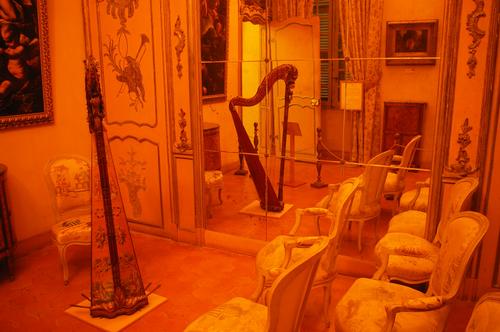 Interior Palace Lascaris NicePhoto:debs-eye CC 2.0 Generic no changes made
Interior Palace Lascaris NicePhoto:debs-eye CC 2.0 Generic no changes made
Palais Lascaris is one of Nice's historic gems. This richly decorated 17th-century palace has an opulent interior, complete with wide staircases and vaulted ceilings. A special attraction is the building's restored 18th-century pharmacy.
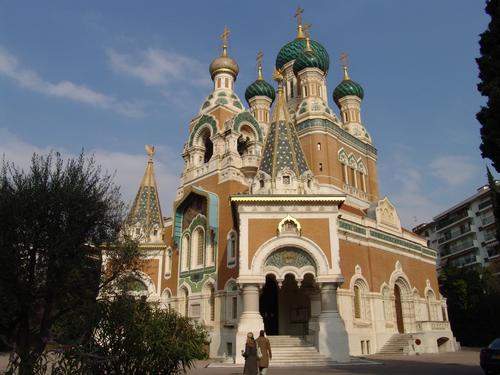 Russian Orthodox Cathedral NicePhoto: Grippenn CC 2.5 Generic no changes made
Russian Orthodox Cathedral NicePhoto: Grippenn CC 2.5 Generic no changes made
Nice's Russian Orthodox Cathedral is one of the city's top tourist attractions. Built by the Russian Czar Nicholas in the early 1900s, this church features particularly fine woodwork, as well as an extensive collection of icons and many other historical items.
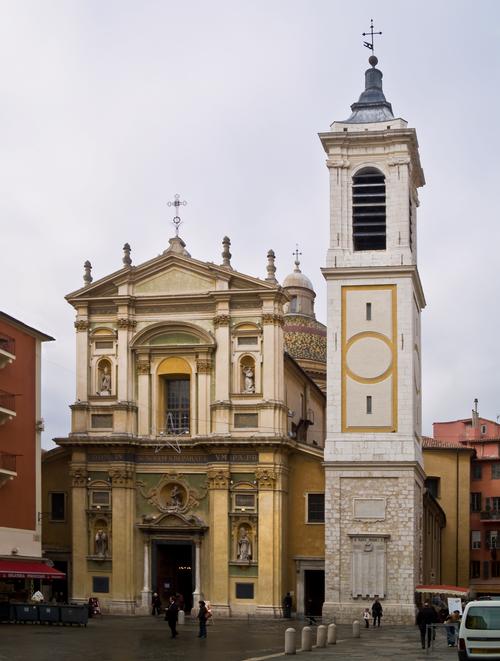 Cathedral de Saint Reparate NicePhoto: Myrabella CC 3.0 Unported no changes made
Cathedral de Saint Reparate NicePhoto: Myrabella CC 3.0 Unported no changes made
Nice's two main Catholic churches are Notre Dame Basilica and Saint Reparate Cathedral. The first has a gothic look despite the fact that the church dates from 1868. Notre Dame is located in the new center of Nice and is the largest church in the city. The baroque cathedral of Sainte Réparate is located between the narrow streets of Vieux Nice. Although the main building dates back to the 17th century, the most notable sights are the 18th century bell tower and the beautifully tiled dome.
The Paleontological Museum Terra Amata is built on an archaeological site from the late 1950s. On permanent display in the museum are the remains of the excavations themselves, along with finds that shed light on prehistoric life. The museum answers the questions of how the earliest man lived, with which instruments he worked and which animals he hunted.
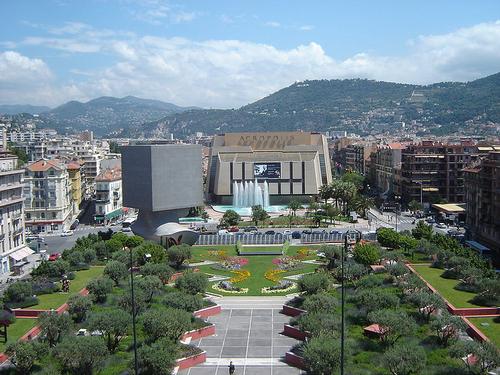 Nice Museum for modern artPhoto: Bamzin CCAlike 3.0 Unported no changes made
Nice Museum for modern artPhoto: Bamzin CCAlike 3.0 Unported no changes made
Nice also has two important art museums; the Musee des Beaux-Arts Jules Cheret with works by the poster artist Cheret, Picasso and many impressionists and symbolists and the Modern art museum with Nouveau Realism, Fluxus and works by Yves Klein. The building is quite spectacular with four marble towers.
Tips
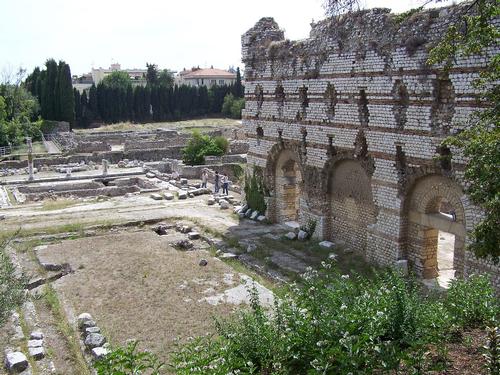 RomonThermal baths Cimiez Nice{hoto: Eric Coffinet in the public domain
RomonThermal baths Cimiez Nice{hoto: Eric Coffinet in the public domain
The Cimiez district is full of attractions. Here you can see, among other things, the Roman roots of Nice. Today it is the chic Belle Epoque district of Nice with many arts-nouveaux facades. There are also many interesting museums. There is the Chagall museum, specially built for the 17-part cycle Le Message Biblique. If you walk up the Boulevard de Cimiez you will arrive at the antique thermal baths and the arena. The Musee d'Archeologie is freely accessible and you can see finds from the (Roman) past. There are also several displays on Nice's history in the Middle Ages.
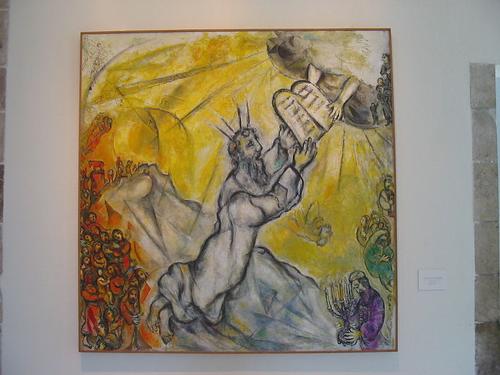 Nationaal Museum Marc Chagall NicePhoto: Rokus Cornelis CC 3.0 Unported no changes made
Nationaal Museum Marc Chagall NicePhoto: Rokus Cornelis CC 3.0 Unported no changes made
The Marc Chagall National Museum has the largest public collection of works by Marc Chagall. You mainly see works with biblical scenes from the Old Testament, supplemented with a large number of works from secular inspiration. In total, more than 400 paintings, gouaches, drawings and works in pastel are on display. In the first room you see twelve large paintings illustrating the first two books of the Old Testament, Genesis and Exodus, in an adjoining room you can see five more large paintings depicting scenes from the Song of Songs. Chagall made especially for this museum the mosaic that overlooks the pond and the blue colored stained glass window that decorates the concert hall.
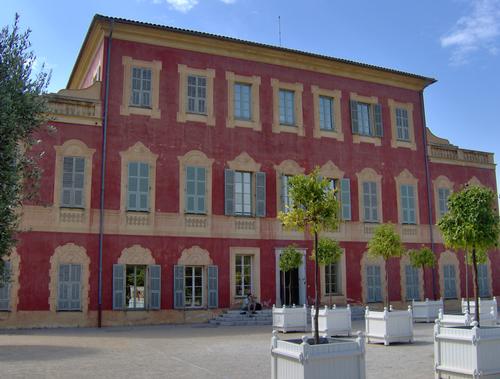 Matisse Museum NicePhoto: Tubantia CC 3.0 Unported no changes made
Matisse Museum NicePhoto: Tubantia CC 3.0 Unported no changes made
The Musee Matisse displays bronze sculptures and beautiful paintings. Finally, there is also the Franciscan Museum with frescoes, furniture and liturgical attributes.
Useful links Nice
BBC Country ProfilesWorld Fact Book Explore all Countries
How to call
Last updated November 2025
Copyright: Team - The World of Info